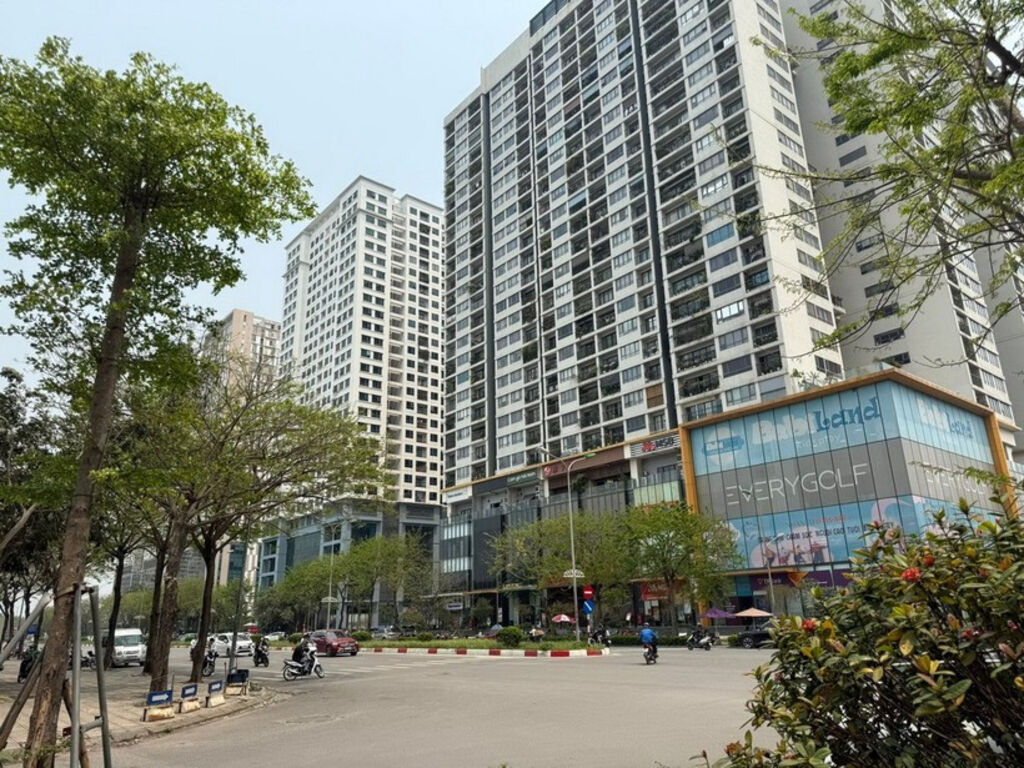 |
| Vietnam’s per capita housing floor area now averages 27 square meters__Photo: VNA |
Over the past four decades of Doi Moi (Renewal), Vietnam has made a significant shift in housing policy, transitioning from a centrally planned, subsidized system to a dynamic, market-oriented real estate sector.
During this transformation, the State has remained a guiding force, with robust social housing policies to ensure low-income and vulnerable groups can access stable, affordable houses.
From subsidy to market
Since economic reforms began in 1986, especially from the 1990s onward, Vietnam has increasingly opened its housing market to private investment. The old system of State-allocated housing gave way to market-driven buying and selling, with commercial apartments, terraced houses, and villas emerging nationwide. This has mobilized large amounts of capital into construction and real estate, fuelling economic growth.
However, speculative activity also drove prices beyond the reach of many, highlighting the limitations of a purely market-driven approach. In response, the Government implemented a comprehensive social housing policy in the early 2000s, positioning housing security as a core component of social welfare and equity.
Social housing projects, often developed through public-private partnerships, are rented or sold below market rates, supported by preferential credit packages from the Vietnam Bank for Social Policies and commercial banks. These packages offer low interest rates and extended repayment periods, easing the financial burden on low-income buyers.
To attract private developers, authorities have introduced land use incentives, tax exemptions, and reduced input costs for social housing projects. This support enables lower home prices for end-users.
Prime Minister Pham Minh Chinh has consistently called for accelerated social housing development, especially in industrial and export-processing zones. The real estate market must serve both commercial and social needs, he stated, urging all levels of government to treat social housing as a shared responsibility and political priority.
The Government has set a target of delivering at least 100,000 social housing units by the end of 2025. Authorities are directed to allocate land, recover delayed projects, and enhance investment incentives to meet this goal.
The State as market regulator
Despite operating in a market context, the social housing segment remains under State regulation to ensure equitable outcomes. The Government oversees planning, permits, pricing, and quality standards, supported by national housing programs and development funds.
Vietnam’s per capita housing floor area now averages 27 square meters. Major cities like Hanoi, Ho Chi Minh City, Da Nang, and Hai Phong have seen the completion of many social housing projects. Hundreds of thousands of households, especially low-income workers, have secured affordable, stable homes, often with concessional loans enabling home ownership.
As of the end of July, 59.6 percent of the goal of the project to build 1 million social housing units had been achieved. Of 692 ongoing projects, with a total of 633,559 units, 146 were completed, supplying 103,717 units, 124 projects with 111,622 units are under construction, and 422 with 418,220 units are approved.
Challenges remain, especially mismatches between demand and supply. High land costs, limited land availability, and complex administrative procedures continue to hamper progress. Soaring commercial property prices also impact middle-income earners.
To address this, authorities are prioritizing land allocation in urban and industrial zones and streamlining administrative procedures. Developers seek faster approvals, easier land clearance, and better credit access, while citizens want quality, well-located housing with adequate infrastructure.
The Ministry of Construction plays a key role in translating policies into legislation and overseeing implementation. It has submitted the amended Housing Law, a new decree on social housing, and national development programs. The Ministry also monitors project compliance nationwide and urges coordinated efforts across government levels and the private sector.
Deputy Minister of Construction Nguyen Van Sinh emphasized that social housing development is both an economic and political mission—crucial for market stability and improved living conditions amid rapid urbanization.
Experts, including Dr Nguyen Van Dinh, a land and real estate market expert and Professor Dang Hung Vo, former Deputy Minister of Natural Resources and Environment, advocate administrative reforms, more flexible credit systems, and transparent profit-sharing in public-private partnerships to ensure sustainability. A balance between State, citizen, and business interests is essential for meaningful progress.









